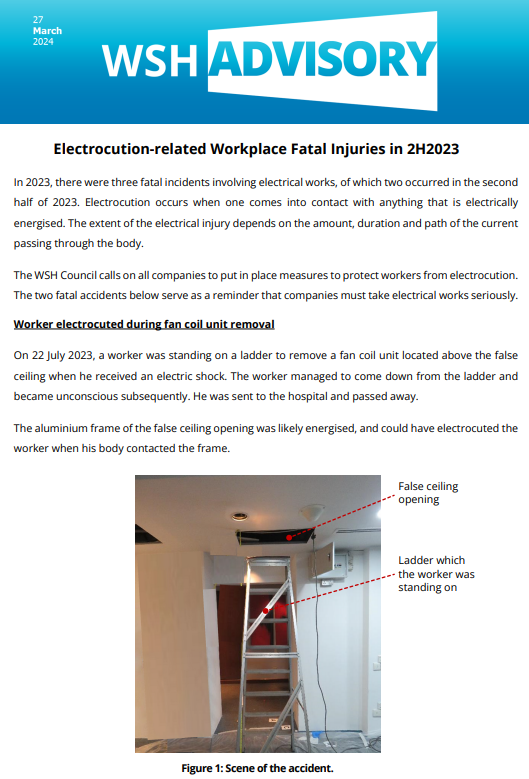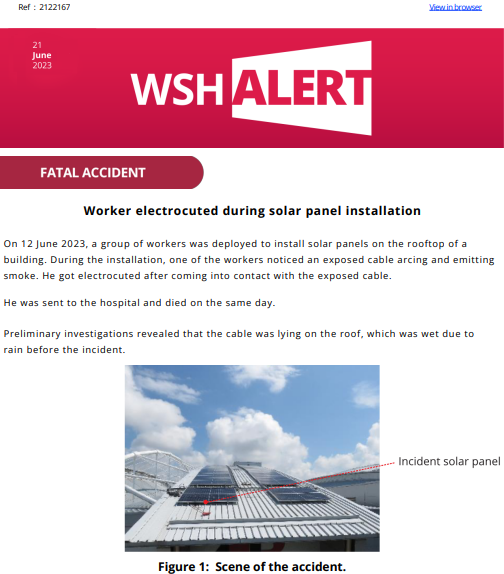Electrical Safety
Learn about the safe use of electricity in the workplace. Find out about related laws and standards.
Definition: Electrical Safety
Electricity is a necessary part of our daily life. It is an essential energy source in our workplaces for purposes from lighting to powering electrical equipment. While useful in many applications, working with electricity can cause significant danger or harm if mishandled. Electrical incidents can occur to anyone and can cause serious or even fatal injuries.
Types of electrical incidents include:
- Electric shock;
- Electrocution;
- Electrical burns;
- Loss of muscle control;
- Fire and/or explosion; and
- Damage to machineries.
There are numerous potential electrical hazards present in the workplace. These hazards can include:
- Damaged electrical cords;
- Overloaded plugs or circuits;
- Exposed wires;
- Defective equipment; and
- Wet or damp conditions.
It is important that workers understand the importance of electrical safety and take the necessary precautions when working with or near electrical equipment.
Working Safely with Electrical Equipment
You must observe safety measures when working with electrical equipment. Some measures are:
- Ensure proper grounding of electrical equipment;
- Check the suitability of the connection of the electrical equipment voltage rating to the electrical supply;
- Conduct visual inspections on electrical equipment before starting work;
- Keep the electrical equipment area dry and free of dust; and
- Use the PPE provided in the correct manner. Such PPE includes insulating gloves, safety footwear and non-conducting clothes.
Equipment Maintenance and Repair
Safe work procedures must be followed when performing maintenance and repair works on electrical equipment.
The Lock-Out Tag-Out (LOTO) system must be implemented. The system should cover the following actions minimally:
- De-energising the machine before commencing any maintenance or repair;
- Turning off the machine;
- Deactivating energy isolating devices e.g. circuit breaker, disconnect switch;
- Setting lockout and/or tag-out control switches to an “off” or “safe” position;
- Releasing or blocking stored energy;
- Testing operating controls by pressing/turning the “on” position to ensure the machine does not start up, then returning operating controls to the “off” position;
- Performing the necessary maintenance or repair;
- Removing tools and other items, and reinstalling machine guards when work is completed;
- Removing locks and tags; and
- Turning on energy and testing to make sure machine is working properly.
For more information, refer to the activity-based checklist on safe electrical maintenance work (PDF).
NOTE: Only Licensed Electrical Worker (LEW) should perform electrical maintenance and repair works. To know more about LEW, visit the Energy Market Authority (EMA) website.
Laws and Industry Standards
As an employer, you are expected to comply with Singapore's WSH laws. You should pay particular attention to:
- WSH (General Provisions) Regulations
- WSH (Construction) Regulations
- WSH (Risk Management) Regulations
You should also observe relevant industry standards, such as:
- SS 638: Code of practice for electrical installations
- SS 650: Code of practice for temporary electrical installations – Part 1: Construction and building sites
- SS 650: Code of practice for temporary electrical installations – Part 2: Festive lighting, trade-fairs, mini-fairs and exhibition sites
- CP 88: Code of practice of temporary electrical installations – Part 3: Shipbuilding and ship-repairing yards
Please refer to the WSH (Approved Codes of Practice) Notification 2024 for the full list of approved Codes of Practice.






